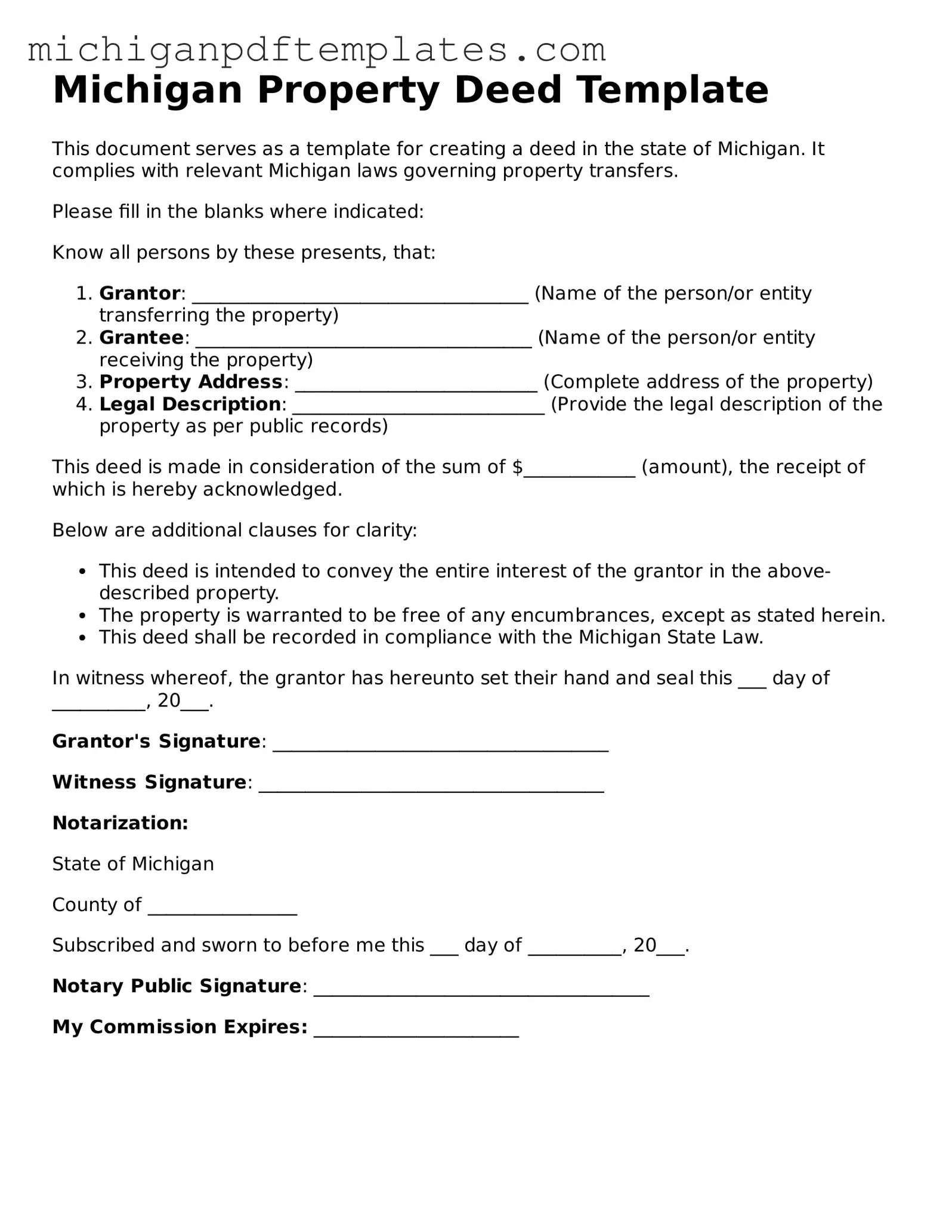The Michigan Deed form is a crucial legal document that facilitates the transfer of property ownership from one party to another. Understanding its components is essential for anyone involved in real estate transactions in Michigan. This form typically includes details such as the names of the parties involved, a description of the property being transferred, and the signature of the grantor, which is the person giving away the property. Additionally, the deed must be notarized to ensure its validity. There are different types of deeds, including warranty deeds and quitclaim deeds, each serving distinct purposes and offering varying levels of protection for the buyer. Knowing the differences can help individuals make informed decisions during the property transfer process. Moreover, the Michigan Deed form must be recorded with the local register of deeds to provide public notice of the change in ownership, which is an important step in protecting the rights of the new owner. Overall, this form plays a vital role in ensuring that property transactions are conducted smoothly and legally.
